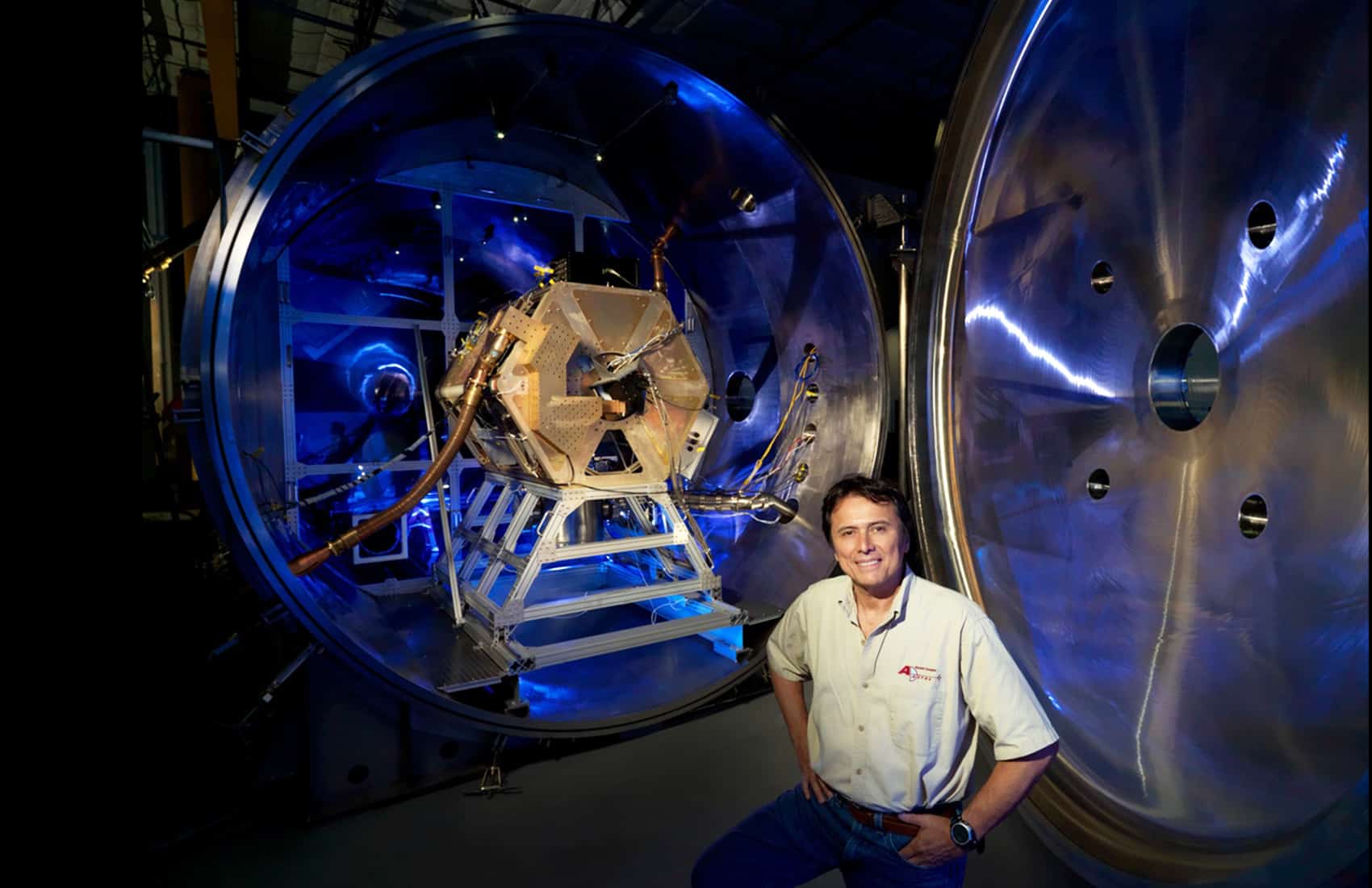The VASIMR spacecraft engine that is the brainchild of Tico physicist Franklin Chang Díaz is one step closer to reality, Chang’s company Ad Astra Rocket Company reported this week.
The VASIMR is scheduled in late October for a test aimed at bringing the former NASA astronaut’s engine to a technology readiness level 5, meaning it would be a step just before space flight.
Ad Astra expects the VASIMR engine to be the propulsion technology that will facilitate long-distance space travel as well as allow the transport of larger loads in a more efficient way.
The stage is part of the three-year contract that Chang’s Ad Astra Rocket Company has with NASA and that this week began its second year, the company reported.
Under the NASA partnership Ad Astra will demonstrate a VASIMR prototype at its 150 square-meter vacuum chamber in Texas. Chang’s company has successfully completed all milestones for the first of its three-year Next Space Technology Exploration Partnerships (NextSTEP) contract with NASA.
The $9 million agreement is structured as a one-year contract with two additional one-year extensions dependent upon successful completion of project milestones.
Steady progress
Ad Astra’s Chief Operations Manager Juan Ignacio del Valle said the goal for this year is to maintain a plasma firing for about one hour. That would represent a mayor milestone for the VASIMR current prototype, known as VX-200SS.
The device has only fired plasma discharges lasting a few seconds, he said. AdAstra has completed more than 10,000 firings of its prototypes since 2005.
Tests will continue in 2017 at increasingly longer pulse lengths. Ad Astra aims to demonstrate a 100-hour continuous firing of the VASIMR prototype at 100 kilowatts by mid-2018. That would represent the culmination of the design and development stages of the plasma engine technology, Del Valle said.
Since the start of its NextSTEP contract, Ad Astra completed the redesign and manufacturing of the new VX-200SS rocket core and new vacuum and thermal management systems for the laboratory.
These are needed for handling the vacuum requirements and “the unprecedented thermal load arising from the rocket’s 3 million-degree plasma exhaust,” the company reported.
The VX-200SS prototype will include a new proprietary rocket core design and will be capable of operating indefinitely in a thermally stable mode under space-like vacuum conditions.
Del Valle noted that while the engine’s experimental stages take place only at Ad Astra’s Texas lab, various Costa Rican scientists and engineers participate in the development of some parts and protocols for the engine at the company’s facilities in Liberia, Guanacaste.
Recently, Del Valle and two more Tico experts worked on the reconditioning of the vacuum chamber in Houston, he told The Tico Times.
VASIMR’s final stage
If Ad Astra’s contract is successfully completed in 2018, the company would proceed with the “design, assembly and operation of a space-flight-ready VASIMR prototype,” Del Valle said.
That would require confirmation by NASA of its interest to proceed with a new contract to finance the construction of the engine, Del Valle noted.
The engine’s technology recently appeared on the big screen in director Ridley Scott’s latest movie “The Martian,” based on the novel by U.S. author Andy Weir.
The story portrays the VASIMR as the technology used for launching the first manned mission to Mars.
Watch a plasma firing of a VASIMR prototype






